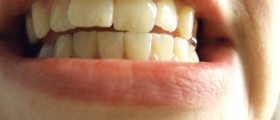
What exactly is benign positional vertigo and which symptoms indicate it?
This type of vertigo is actually a result of ear particles entering the part of the ear canal which is very sensitive, and due to this, the person experiences dizziness and nausea, or even vomiting in some cases. It is easy to tell that the main symptoms do not differ from the symptoms of a common vertigo, which means that even though the person in question can easily conclude what the problem is, the doctor is the only person who can diagnose this disorder and detect its cause. As for the ear particles, they are actually made of calcium, and they tend to desensitize the nerves in the inner ear once they get to the inner ear canal. The whole treatment consists of maneuvers done in order to move the particles from the ear canal to some other place where they will not cause such problems.
Exercises that can help with benign positional vertigo
There are three maneuvers that are often employed in cases of people with benign positional vertigo, because they are known to be very helpful and effective. After these repositioning procedures, the person in question will probably have to keep the head in an upright position for 24 hours, which means that it will be necessary to sleep in a sitting position as well. During the treatment, the person should not drive and work at heights, looking up should also be avoided, as well as sudden changes of the body position. It is necessary to prevent falls, because they are also more likely to occur in such cases.
Epley maneuver is also known as canalith repositioning maneuver, and it has to be performed by a trained doctor or qualified physician. It consists of 4 different positions of head, of which each takes half a minute, and if the person is likely to feel nausea, some anti-nausea medication should be taken in advance.Semont maneuver is called Liberatory maneuver as well, and it consists of rapid head movements from side to side. It is effective in 90% of the cases after the fourth session, and a good thing about this one is that the doctor can show the person in question how to perform these exercises correctly at home.Brandt-Daroff exercises can be performed at home, but they are only recommended when it cannot really be established which ear is affected. They should be done for two weeks, three times each day.

















Your thoughts on this
Loading...